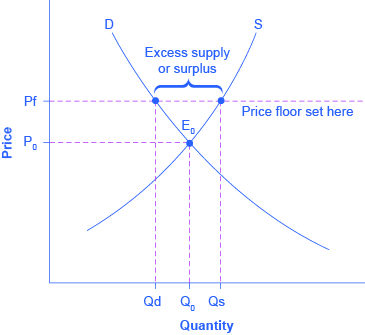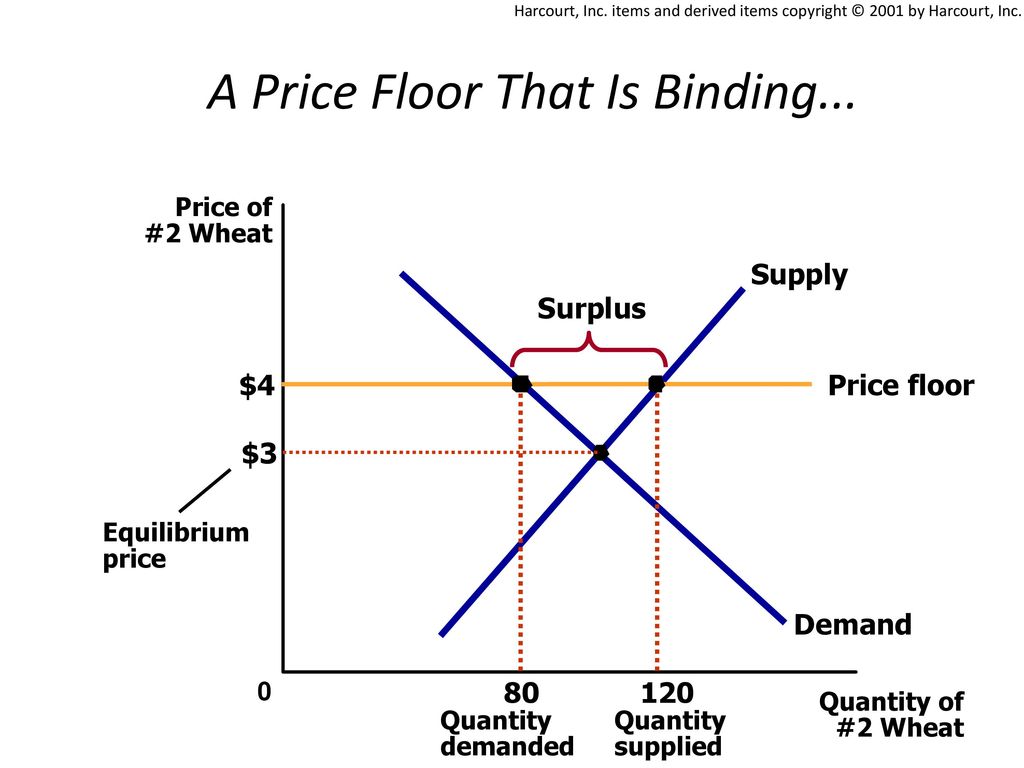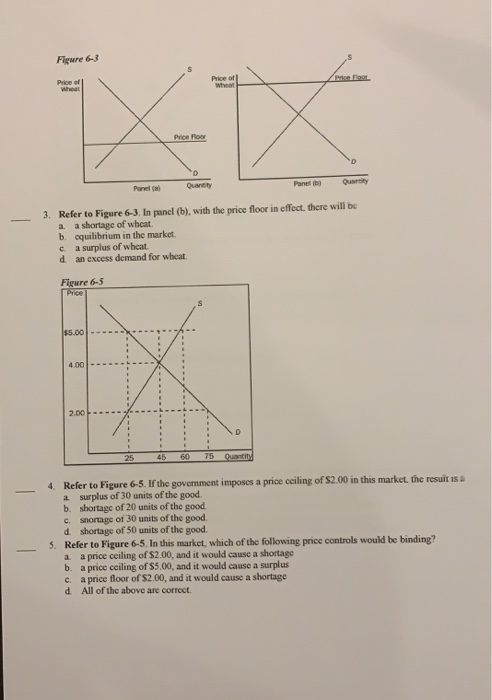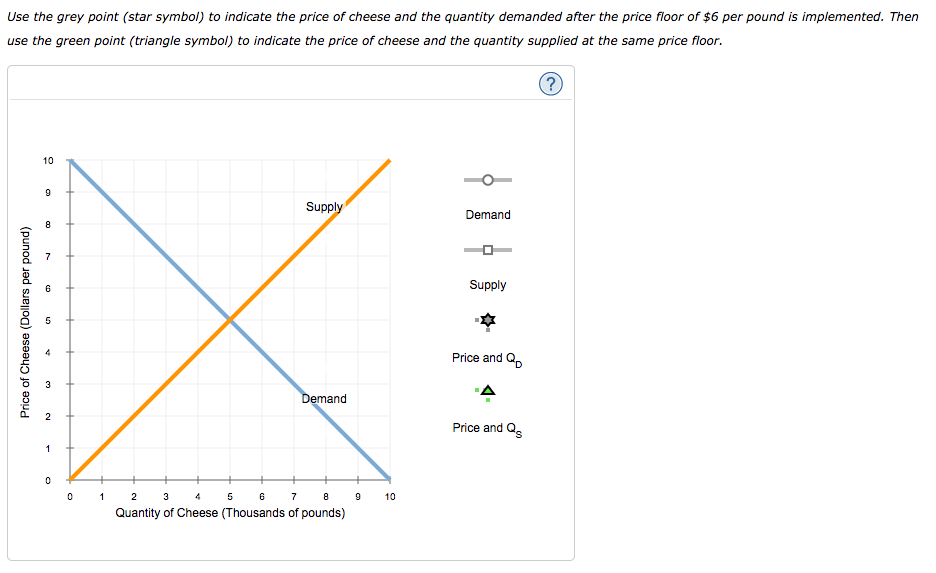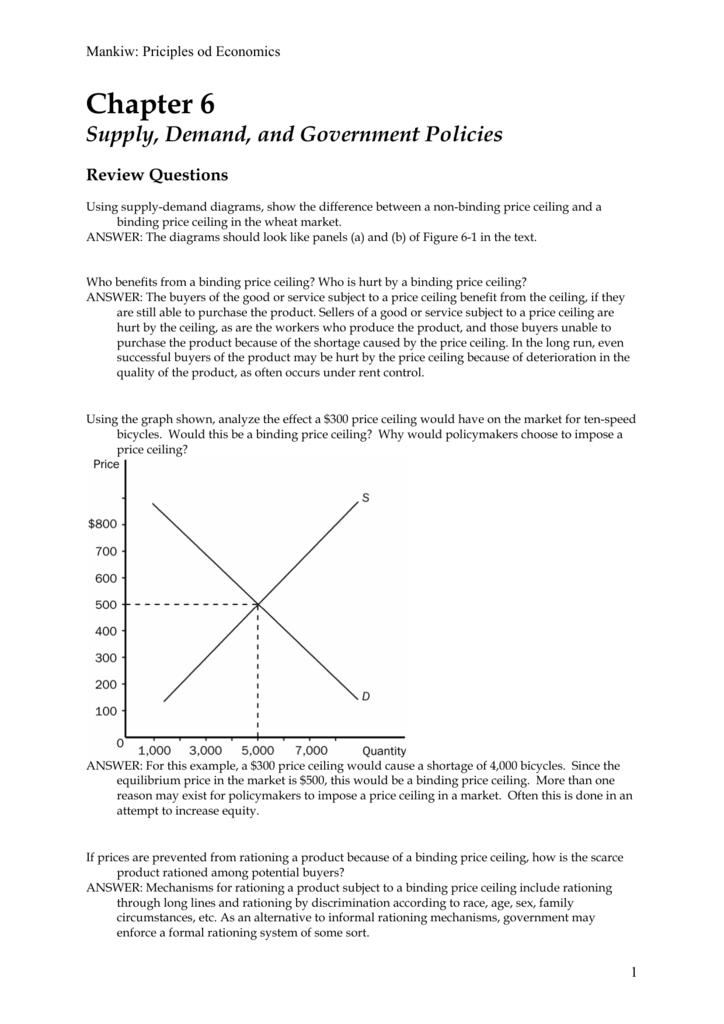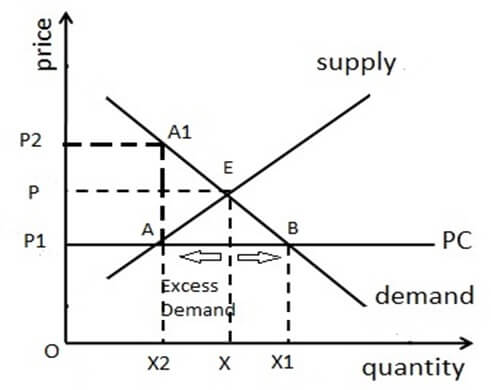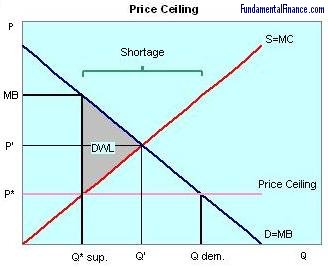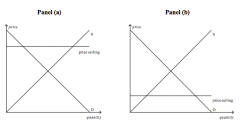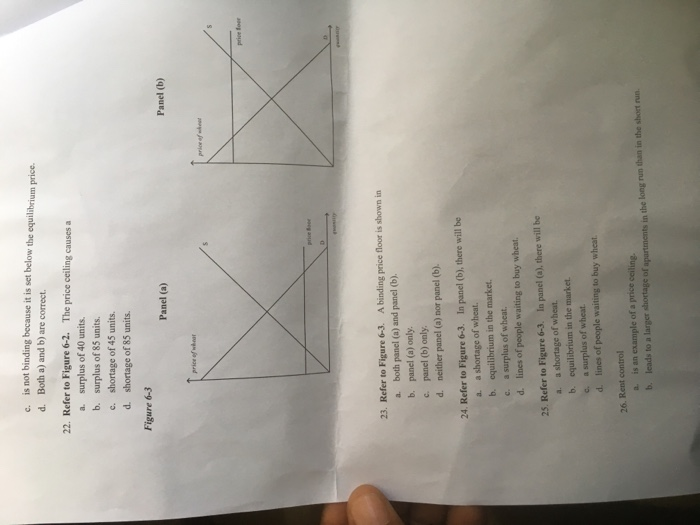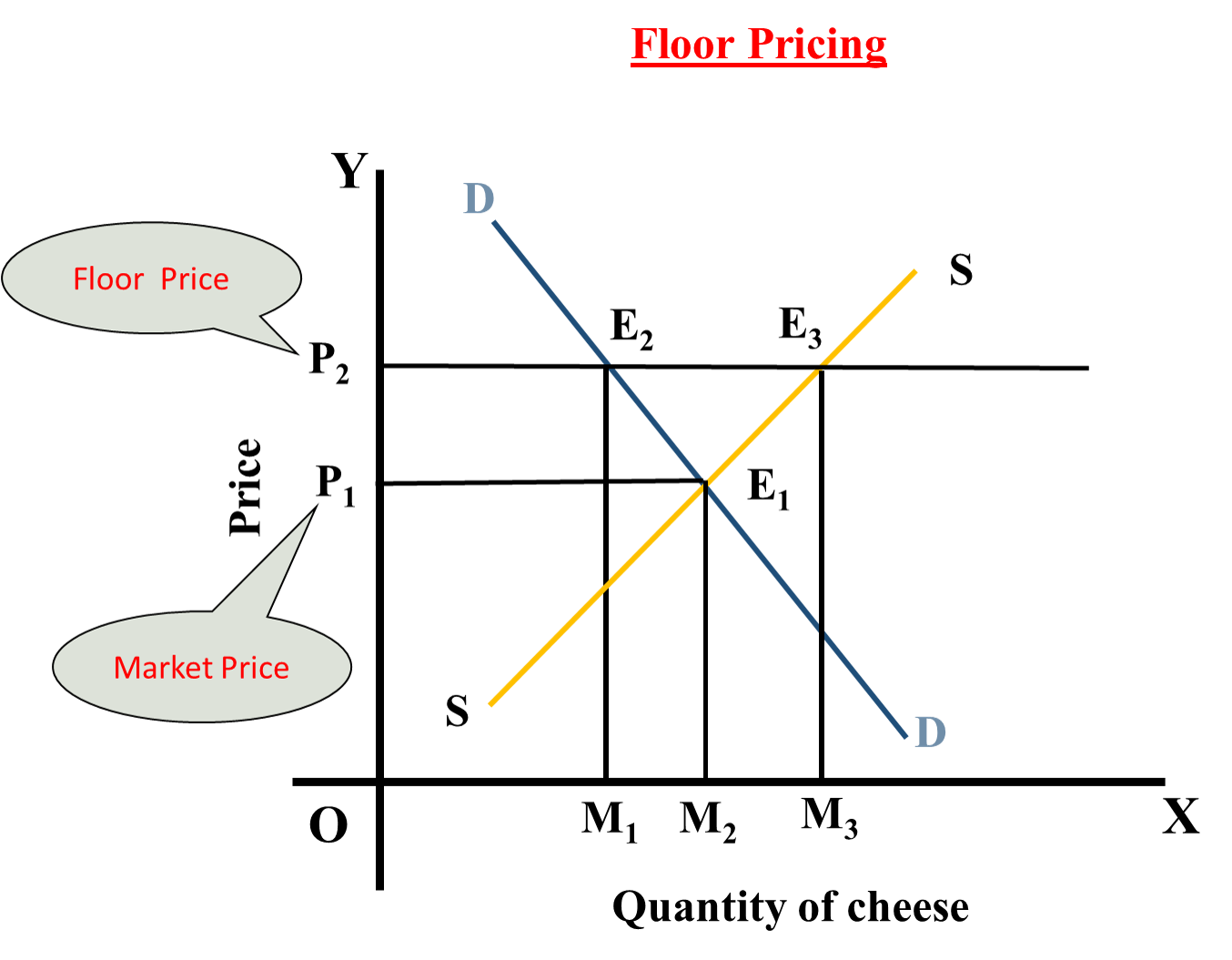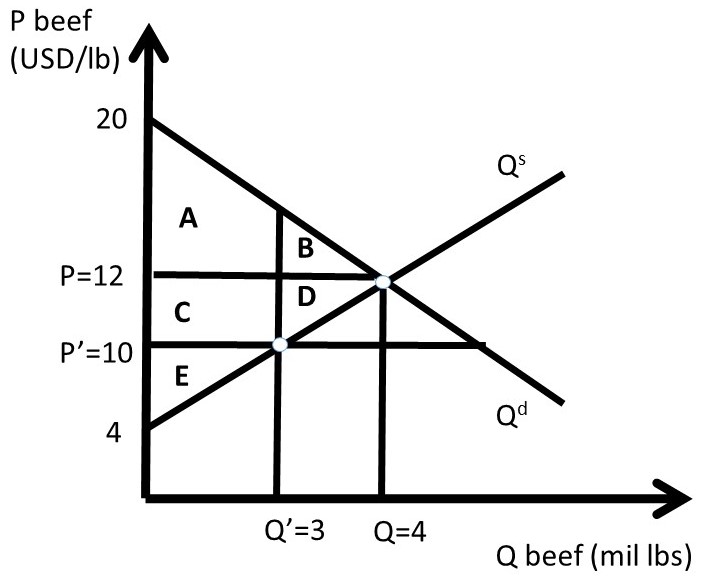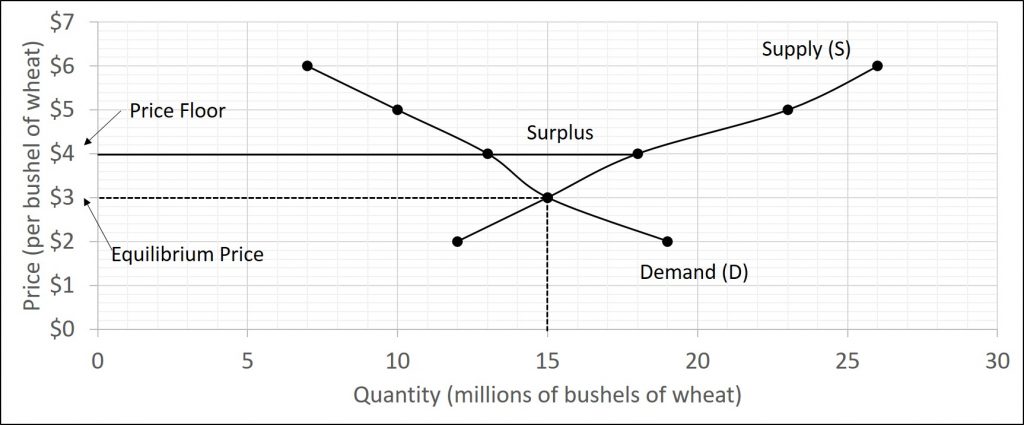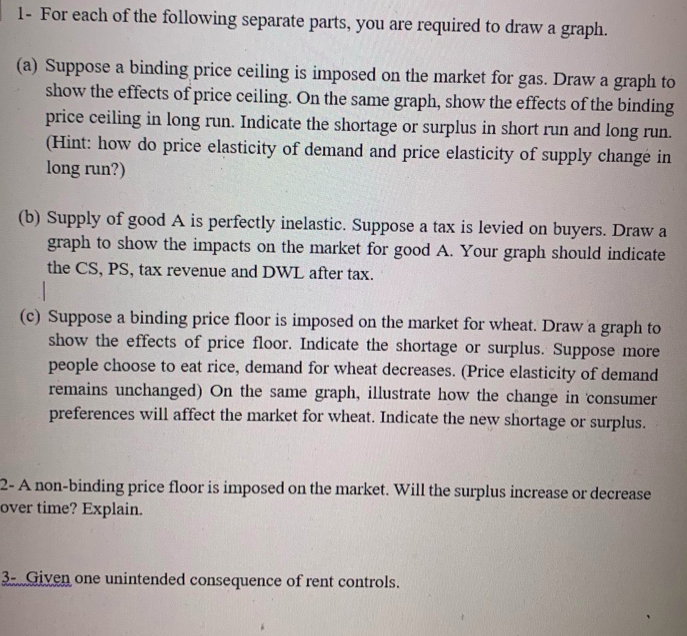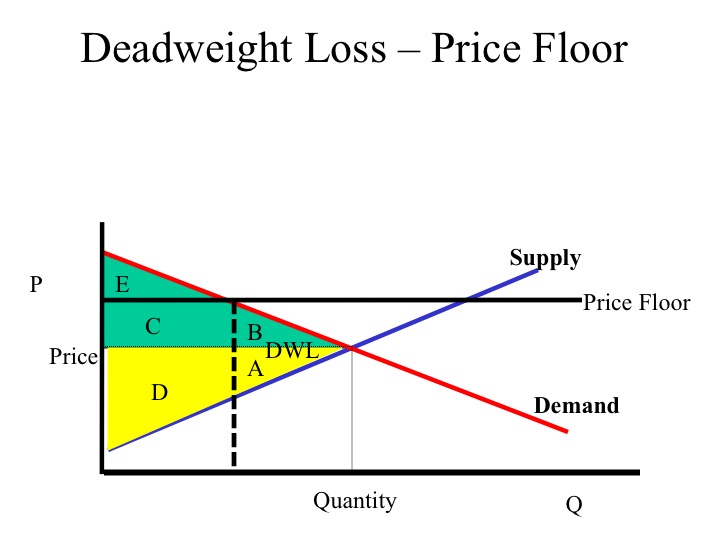A Binding Price Floor In The Market Of Wheat

The equilibrium market price is p and the equilibrium market quantity is q.
A binding price floor in the market of wheat. Consider the figure below. A price floor must be higher than the equilibrium price in order to be effective. Another way to think about this is to start at a price of 100 and go down until you the price floor price or the equilibrium price. Perhaps the best known example of a price floor is the minimum wage which is based on the view that someone working full time should be able to afford a basic standard of living.
There are two types of price floors. Figure 4 8 price floors in wheat markets shows the market for wheat. A price floor in the market for wheat. The latter example would be a binding price floor while the former would not be binding.
A shortage in the market. Less than quantity supplied. This is a price floor that is less than the current market price. A non binding price floor is one that is lower than the equilibrium market price.
A price floor is a government or group imposed price control or limit on how low a price can be charged for a product good commodity or service. Increases the price paid by consumers. A price floor is the lowest price that one can legally charge for some good or service. Suppose the government sets the price of wheat at p f.
The equilibrium price commonly called the market price is the price where economic forces such as supply and demand are balanced and in the absence of external. Does not change the price received by farmers. Notice that p f is above the equilibrium price of p e. Equal to quantity supplied.
Note that the price floor is below the equilibrium price so that anything price above the floor is feasible. The result of the price floor is likely to result in. A price floor or minimum price is a lower limit placed by a government or regulatory authority on the price per unit of a commodity. A surplus in the market.
Both a and b are possible. Greater than quantity supplied. A price floor that is set above the equilibrium price creates a surplus. Wheat is a versatile grain that can be grown in a variety of climates and dates back to 10 000 b c.
The imposition of a binding price floor on a market causes quantity demanded to be a. The price of the us dollar is one of the main driving factors of wheat prices as well as supply. Consumers are always worse off as a result of a binding price floor because they must pay more for a lower quantity. A binding price floor causes.

